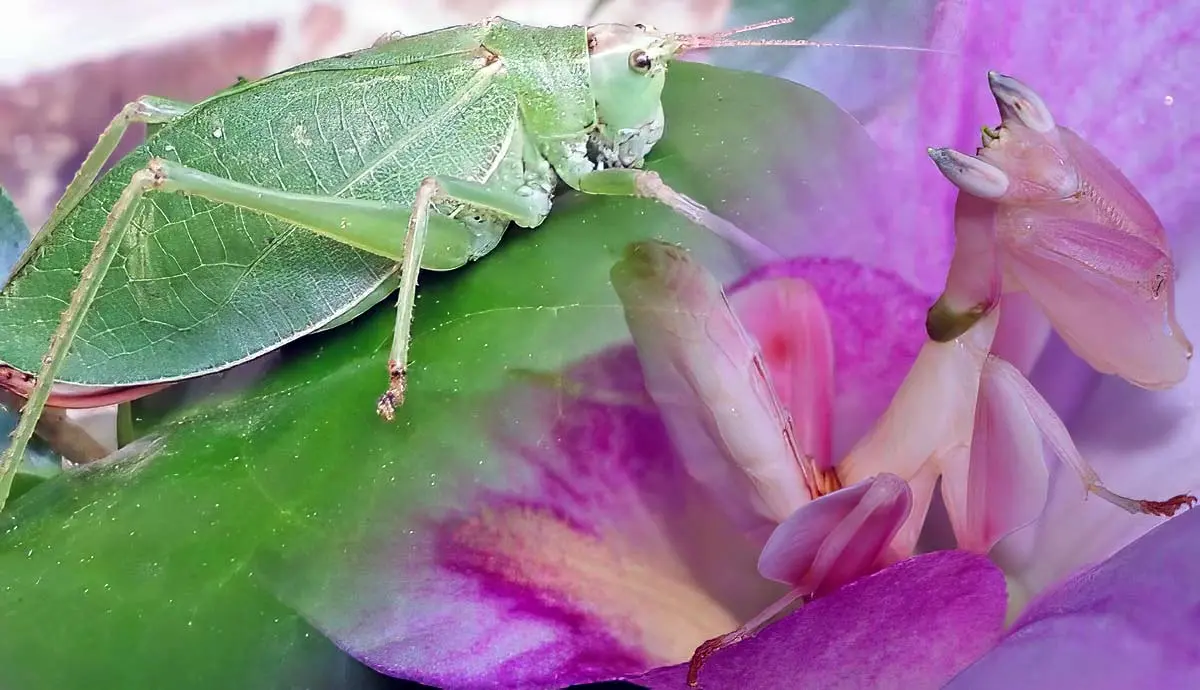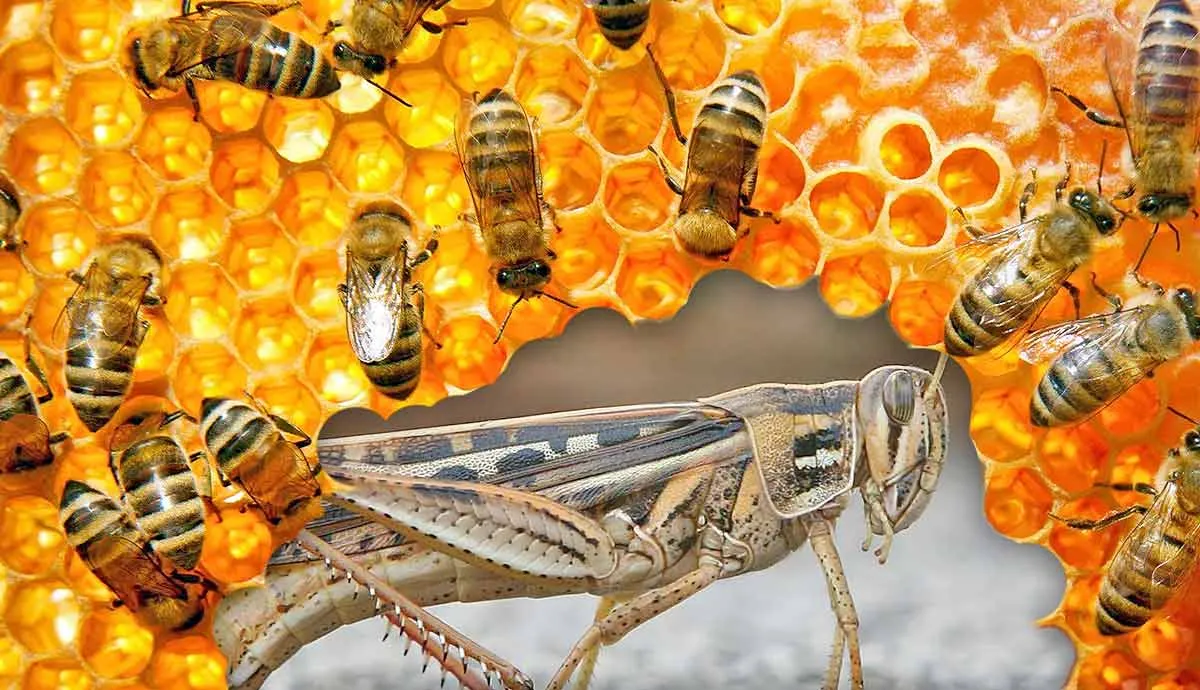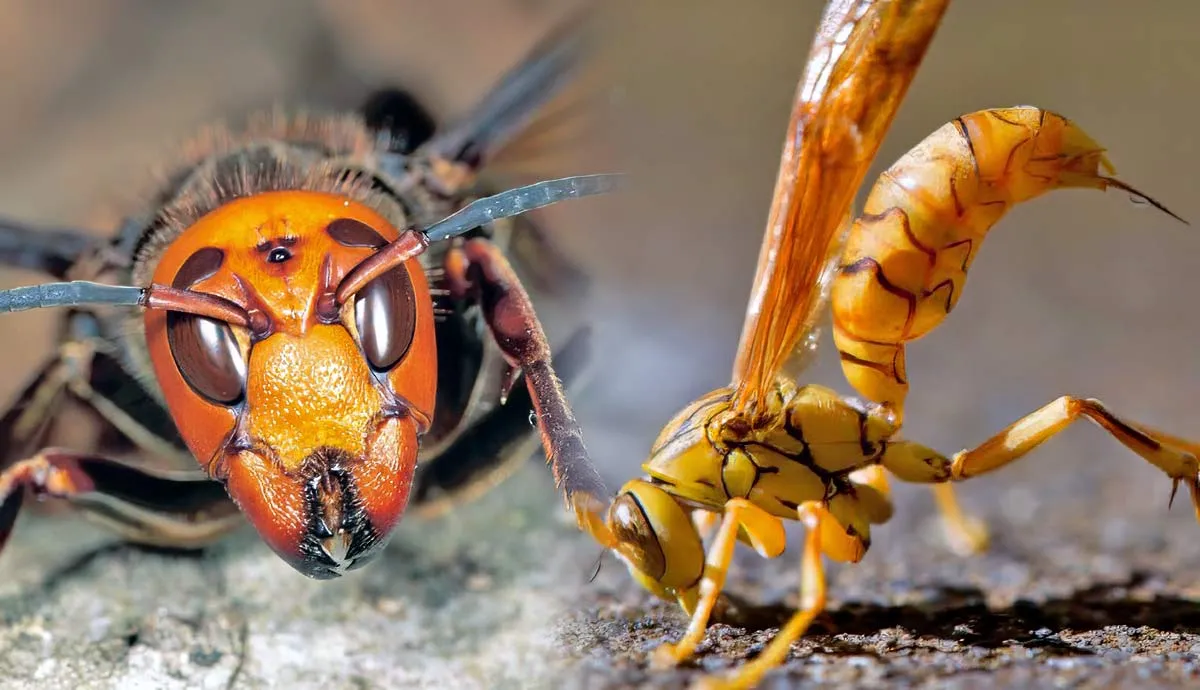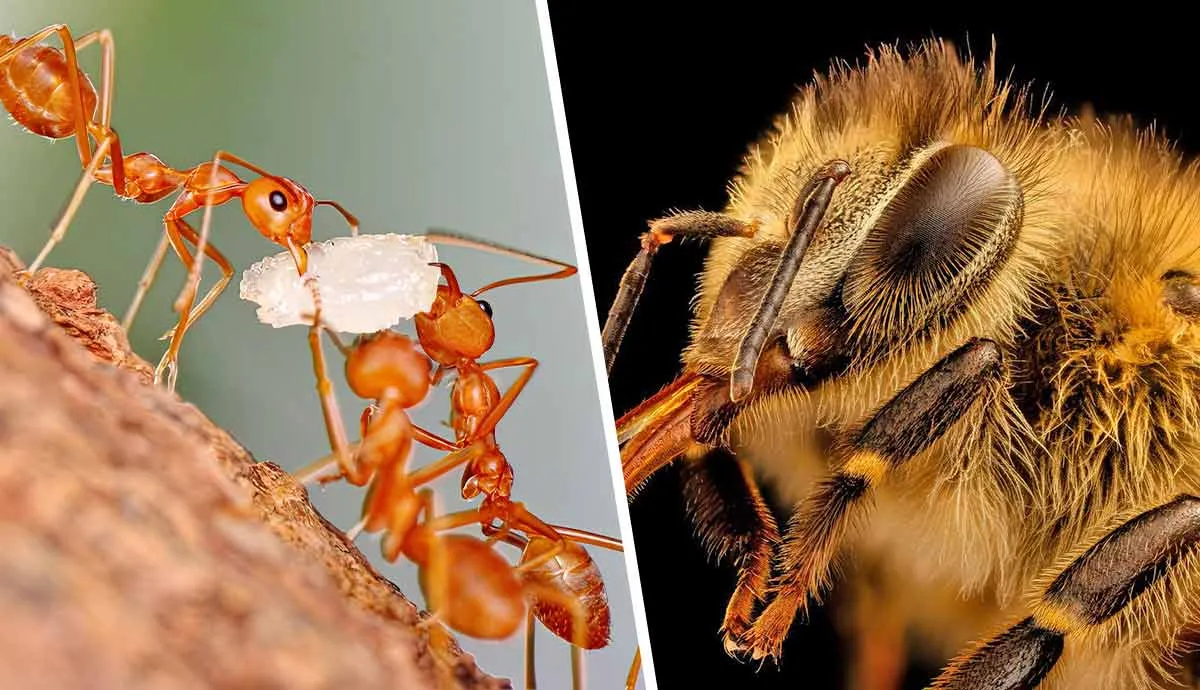Many insects use camouflage to blend in with their surroundings. Their coloration, shape, and even habits can give them the appearance of another creature or allow them to blend into their environment.
The Hummingbird Hawk Moth, Katydid, Orchid Mantis, Walking Leaf, and Atlas Moth are masters of disguise and use this defense mechanism to hunt and thrive. Read on to learn more about these amazing creatures.
Hummingbird Hawk Moth
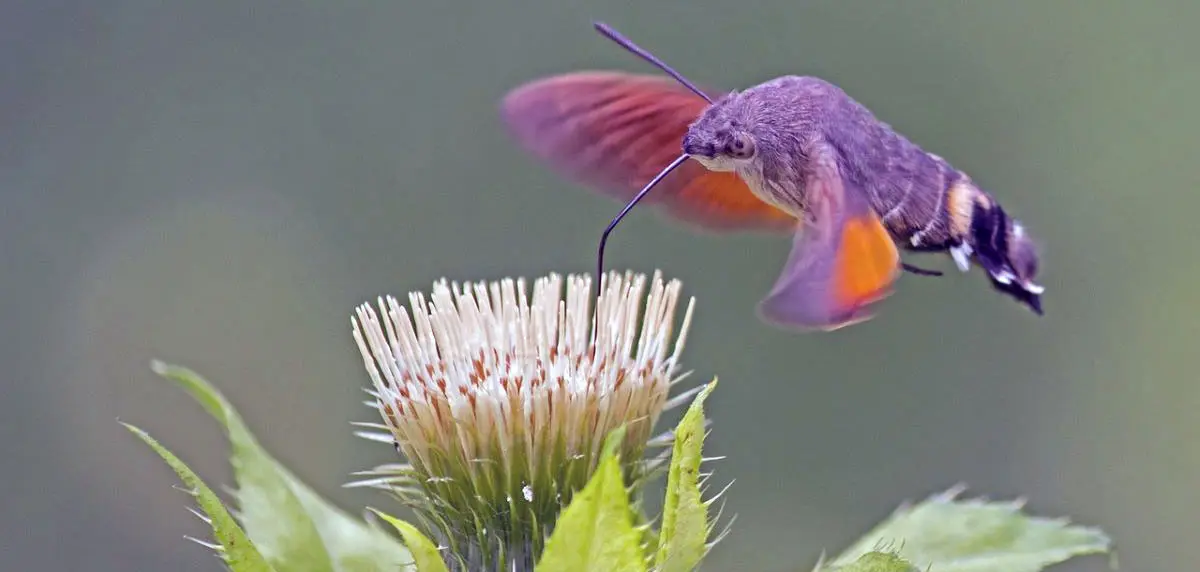
The hummingbird hawk moth, from a distance, is undistinguishable from a hummingbird. There are several species of this moth, and each has unique colorations. One common gesture, however, is elongated hairs that resemble feathers and a tail.
These beautiful moths are found in Europe, Asia, North Africa, and North America. These moths feed on nectar by day, hovering near a flower and extending their long proboscis to suck its sweetness. They can beat their wings at about 85 beats per second. In contrast, a hummingbird can only beat their wings around 50 beats per second.
Although these masters of disguise appear to be imitating the hummingbird, scientists believe this imposter may be a result of convergent evolution. Convergent evolution is when two completely different species develop similar characteristics over time.
The fact that Europe has no hummingbird species, but they do have species of the hummingbird hawk-moth is evidence of this phenomenon.
Yet, the hummingbird hawk-moth uses its bird-like appearance to also help ward off predators. This fascinating creature also has members that resemble bumblebees, another defense mechanism that keeps potential threats from eating them right away.
Katydid
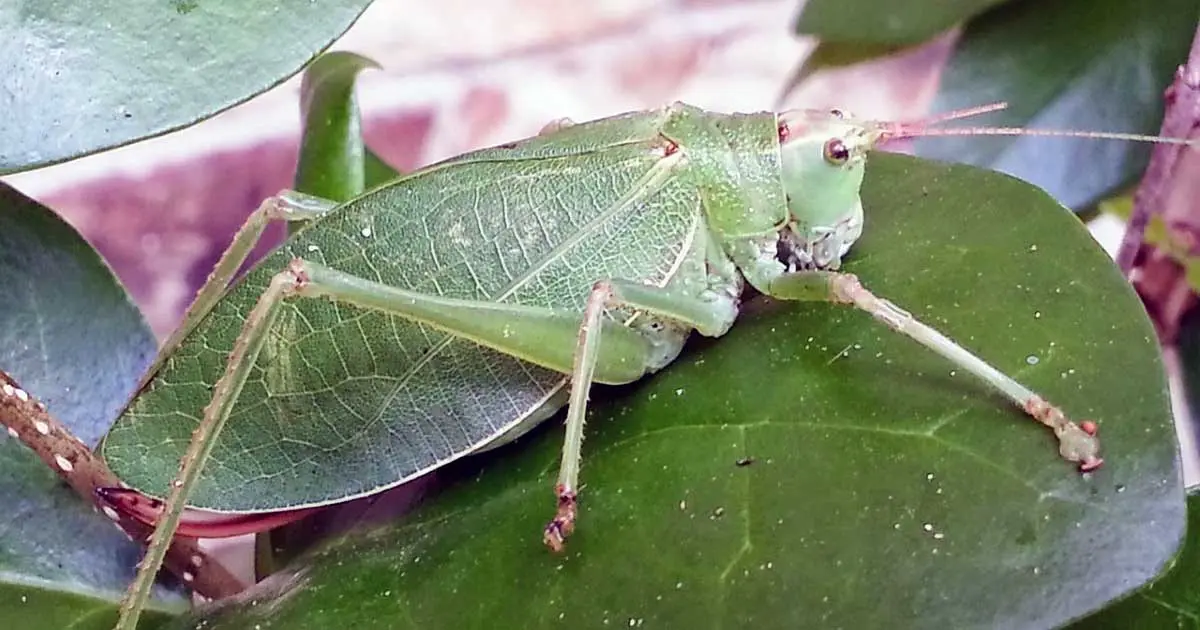
There are over 6,000 species of the Katydid, which are also called bush crickets. These green, grasshopper-related insects have large hind legs and thin antennae. They are well-known for their sound, which is where their name originated. Some people even keep these insects as pets.
Katydids are often between 0.4 to 2.4 inches long, bright green, with wings that they rub together to create their tell-tale sound.
These insects are great at blending into their environment. They have adapted to resemble leaves so that you cannot distinguish them from the vegetation in your garden.
Some species of katydid can even change their coloration. The insects may also lift their wings to expose bright colors. These colorations serve as a warning to predators who may wish to each of them. Some katydids use chemical secretions to keep them from being eaten.
Orchid Mantis
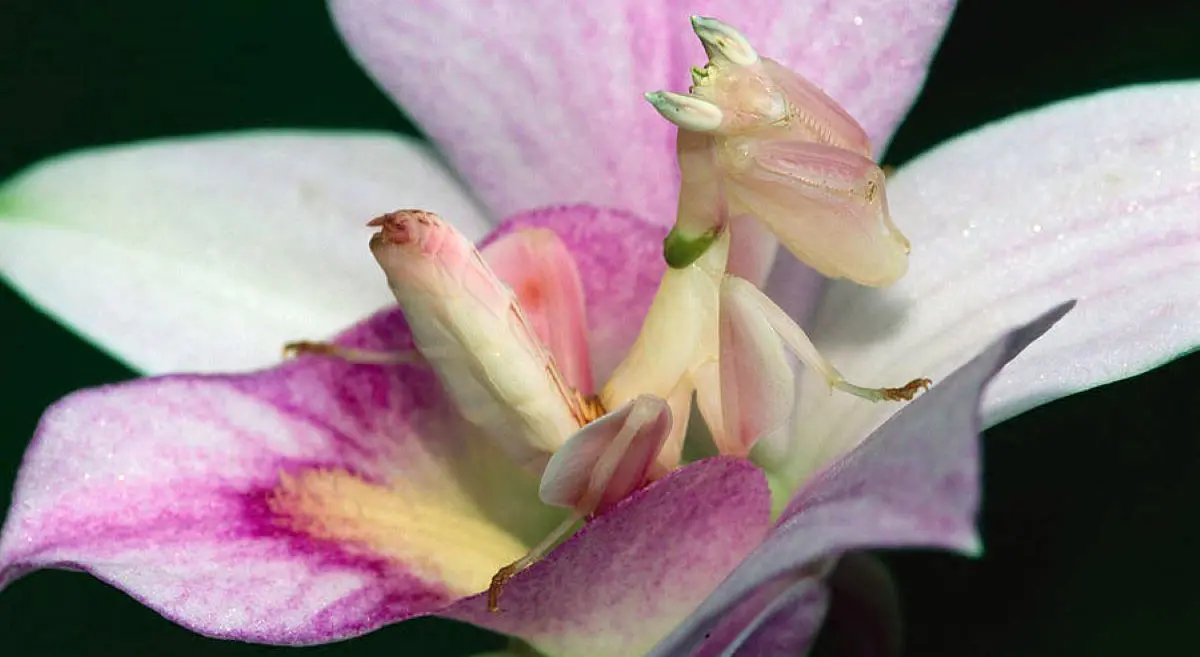
Orchid mantises are a spectacular example of insect evolution. The males are dull, small, white, and brown colored mantises, but the females are large, with beautiful pink legs that appear very much like an orchid blossom.
These gorgeous mantises use their camouflage to hide, not from predators, but from prey. A female can sit, unbeknownst to her dinner, in a blossom, waiting for an opportunity to strike. Since they look like flowers, pollinators come to drink the nectar and are snatched up by the mantises' fast ambushing skills.
Meanwhile, the males use their small, dull bodies to seek out females to mate with them and produce the next generation of incognito predators.
Walking Leaf Insect
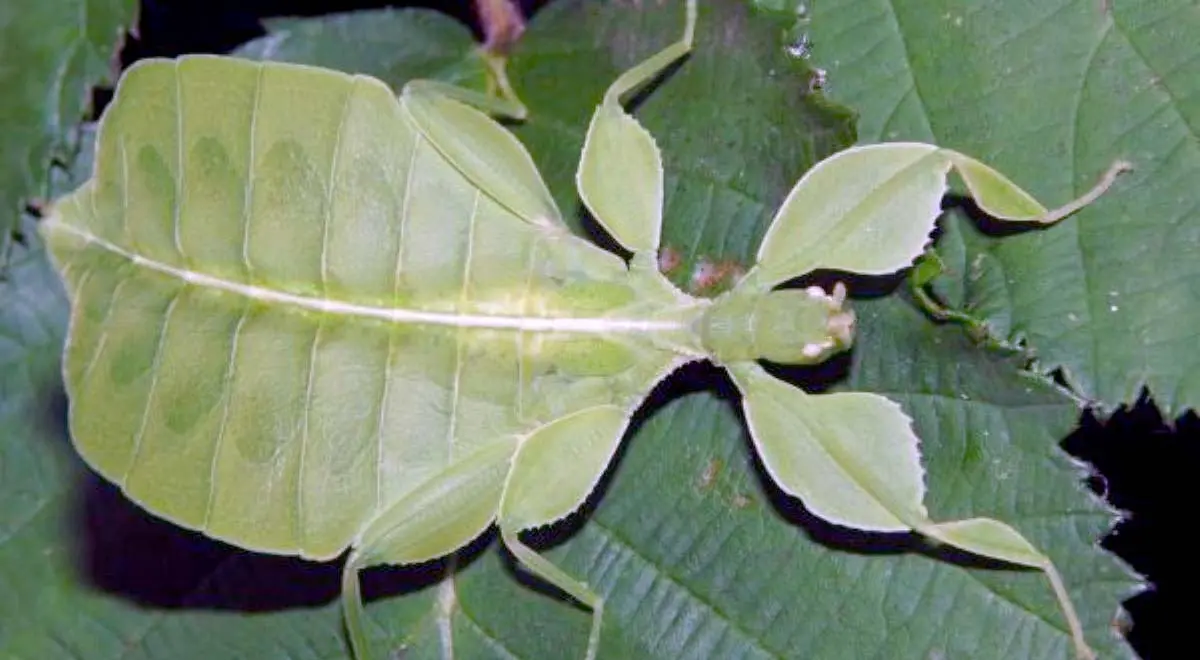
With over 50 species of these flat, green, leaf-like insects, the walking leaf insect knows how to blend into its environment. These creatures live in Australia, Southeast Asia, and Papua New Guinea. They are about 1.1-3.9 inches long, with females growing larger than males.
Their defense mechanism is called leaf mimicry, in other words, they pretend to be leaves. They go so far as to imitate the vein pattern of leaves. Some species even have appearances of holes, disease, and damage to make their leaf mimicry more realistic.
Atlas Moth

The Atlas moth, one of the largest moths in the world, has a wingspan of about 10 inches. As the moth opens its wings, you can see how the tips resemble the head of a snake. This defense mechanism helps to ward off birds and other predators who may be looking for a quick snack.
The pattern on the moth's wings resembles a cobra, which lives in the same area as the Atlas moth, in China, India, Malaysia, and Indonesia.
To emphasize their snake-like wings, a threatened Atlas moth will drop to the floor, flapping its wings to imitate the head and neck movements of a snake. This generally scares away any would-be predators.
Their adaptation is a remarkable example of how creatures change over time to survive. Some other related moths have similar markings to help them blend into their surroundings, but the Atlas moth has taken their disguises to the next level.
Conclusion
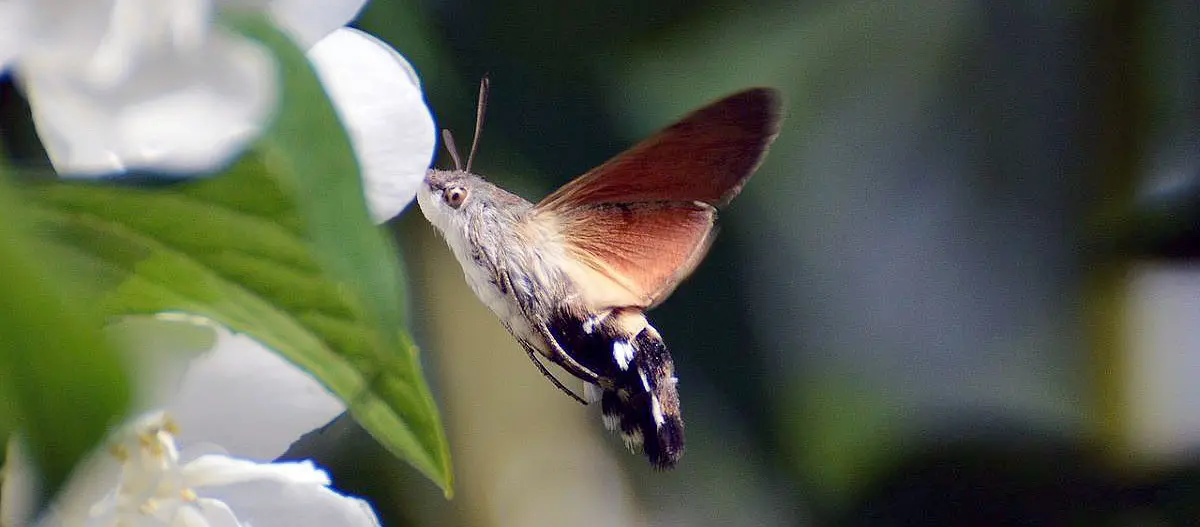
Insects are great at adapting to the bug-eat-bug world around them. They use their mimicry of other animals to keep them safe and to hunt other creatures. These masters of disguise blend in perfectly with their environments or imitate another creature or plant in a way that makes them hard to distinguish.
When you are walking in your garden or down a nature trail, keep your eyes open for these incognito insects.
